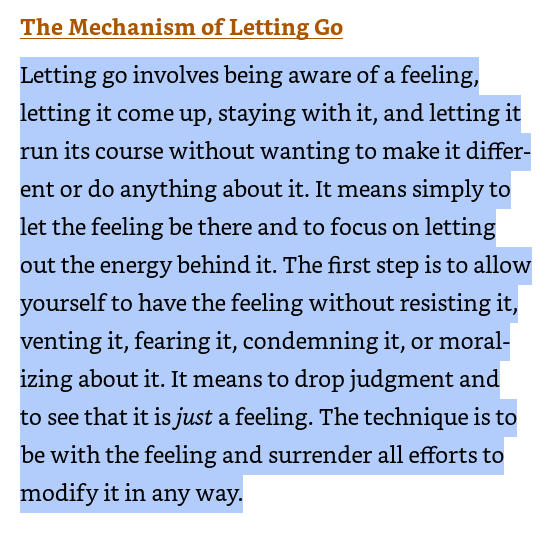The issue with "thinking positive" - and what to do instead
Addressing a common issue of conventional self-help advice and getting to the root cause so that negative thoughts don't pop up in the first place.
I recently watched the movie "Rocketman": the story of Elton John.

I didn't know a lot about Elton and I can't name you five songs from him even if I had a gun pointed at my head, but the movie was amazing.
Not sure if it sticks to the actual facts, but based off what I saw, his mother was really cold, and his father was even colder - abandoning him as a child. It's a messed up story.
In addition to that, the fame attracted many people that took advantage of him, including business partner and boyfriend John Reid, who would coerce him to perform almost every day even when he was at his lowest.
The strong adversity led him to abuse drugs, alcohol, and sex. You know, a somewhat typical Hollywood story.
At the end of the movie, he finds himself in some sort of group therapy, forgiving everyone that wronged him, hugging his inner child, and (I'd assume) living his past life behind.
Now what does it all have to do with psychology (aside from the paragraph before this one)?
Well, throughout the story, you see Elton verbalizing a myriad of painful thoughts, such as "he abandoned me, just like everyone else", or "I’m not deserving of love." (Paraphrased.)
And I think this would make a great topic for today's article: the root cause behind all the thoughts, and how to deal with that.
If you would've told Elton John at its worst to "think positive", he would've probably yelled at you. Yet that’s one of the main issues with conventional methods - they teach you how to "think better thoughts" or "control your mind".
The advice is well meant, and in some cases, it works. But if you look at it on a grander scale, it's like putting a band-aid on an infected wound.
When you have a "negative", anxious, depressing, or angry thought, that's just an indicator of something deeper - an underlying cause that is causing that thought to surface in the first place.
That “deeper” index is commonly called “trauma”. The American Psychological Association (APA) defines it like this:
“Trauma is an emotional response to a terrible event like an accident, rape or natural disaster. Immediately after the event, shock and denial are typical. Longer term reactions include unpredictable emotions, flashbacks, strained relationships and even physical symptoms like headaches or nausea. While these feelings are normal, some people have difficulty moving on with their lives.”
Now, something important to mention is that a “terrible event” obviously includes, but doesn’t have to be limited to situations like rape or natural disasters.
So, for conventional purposes, we will “refine” the meaning of trauma - at least for a better understanding of this article - and we’ll give it the following meaning:
Trauma is any energy that is still pent-up in your nervous system - it hasn't been discharged, gets triggered on certain situations, and alters our thoughts, decisions, and behavior.
Why the distinction? Well, it could be that once you were left alone by your parents at the supermarket for a second, and your survival instincts kicked in because you thought you were abandoned to death. (And your parents were perhaps just in another aisle.) Our little brains will interpret that as abandonment, and if not properly addressed by our parents, trauma is created. (Even if we were never in a threatening situation in the first place!)
In Elton’s case, it could also mean the abandonment of his father or the lack of love provided by his mom. (Or mum, because he’s British?)
Here’s a great, five-minute video explaining trauma. The speaker quotes a book we’ll be talking about next…
Done? Great. Let’s unpack that idea further.
In Dr. Peter A. Levine's fantastic book "Waking the Tiger" (referenced in the video above), he explains how there is a direct correlation between body and mind, and how if we only try to address the latter, we won’t create lasting change:
“Most trauma therapies address the mind through talk and the molecules of the mind with drugs. Both of these approaches can be of use. However, trauma is not, will not, and can never be fully healed until we also address the essential role played by the body.” (p. 4)
“Psychology traditionally approaches trauma through its effects on the mind. This is at best only half the story and a wholly inadequate one. Without the body and mind accessed together as a unit, we will not be able to deeply understand or heal trauma.” (p. 6)
Disclaimer: I am not a therapist and this article is not a replacement for any medical treatment or therapy. If you have symptoms of depression, anxiety, or high stress, please consult your physician.
When I first read Dr. Levine's book, I became aware that the unease that causes "unhappy" thoughts lies primarily in the body, not the mind. You can actually feel those thoughts. It opened a whole new paradigm for me: I no longer believed I had to change my mind, but instead knew I had to find the underlying feeling in the body that was causing the negativity in my head.
But how do you find that? How do you "heal" the body? How do you get to the root cause so that the symptoms (aka. the sad thoughts) disappear?
Well, if you pay close attention to the inner feeling of your body, there might be a certain amount of tension, tightness, unease. It may be expressed as a difficulty breathing, headaches, or like a "weight" carried on your shoulders, knees, lower back, or elsewhere. It may be felt as a very light, tingling sensation, or a strong sense of resistance, heaviness, or pain.
For some people, this tension may be extremely familiar. They may not know where it comes from, or might say that it's genetic: “I’ve had this pain in the lower back since I’m like fifteen, so it must be normal.” It may be true, but it could also be that a certain traumatic experience is "stored" in that body part. After all, the body keeps the score.
But that tension is most likely an accumulation of energy. The five-minute video embedded above explains that beautifully.
The way to resolve traumatic symptoms, proven by Dr. Levine, is not to "manage, suppress, or adjust to", but instead to bring awareness to it through what he calls "Somatic Experiencing".
That is qualified therapy training, and to quote the process would be to turn this long-form article into a book. If you're interested in that, I'd recommend you to go straight to the source and read Dr. Levine's book (linked here again).
Nevertheless, there are different approaches. Other fantastic authors have also written about the healing journey. Some of it is backed by science, other is more spiritual and holistic. Let's dive deep:
In his amazing book "The Power of Now", Eckhart Tolle talks about the existence of a "Pain Body".
The pain body is this entity we have within us that contains emotionally-charged experiences from the past. It can show up as a light discomfort, a sense of unease or anxiety as we live our lives - or it can be heavily triggered by an external situation: an experience that reminds us of a painful past memory, a loss, or a threat to our self-image, causing us deep emotional pain.
During tough situations like these, the pain body "awakens" from its deep sleep and takes over us. Sometimes it causes us to react angrily or defensively. Other times it makes us feel depressed. And, similar to Dr. Levine, Tolle argues that the solution isn't to medicate or cope, but to embrace.
The solution presented in the Power of Now is to bring awareness to the pain body. To dis-identify from it, bring attention to it, and “transmute it” into conscious awareness:
“…how can we be free of this affliction? Make it conscious. Observe the many ways in which unease, discontent, and tension arise within you through unnecessary judgment, resistance to what is, and denial of the Now. Anything unconscious dissolves when you shine the light of consciousness on it. Once you know how to dissolve ordinary unconsciousness, the light of your presence will shine brightly, and it will be much easier to deal with deep unconsciousness whenever you feel its gravitational pull.” (p. 76)
By bringing awareness to the pain body, knowing that it's a learned response somewhere in the past, it starts to dissolve. Another great indicator of "low vibration energy" is to notice how difficult it is to become present to the moment. When immersed in this energy, we continue to dwell on the past or project a more fulfilling reality in the future. Eckhart calls this “the illusion of time”.
If we go deeper on dissolving the pain body, another really cool resource is the book: "Letting Go" by Dr. David Hawkins.
Before we get into the Letting Go Technique, as the author calls it, it's important to see his view of the body-mind duality (notice how similar it is to Dr. Levine's take):
"The mind, with its thoughts, is driven by feelings. Each feeling is the cumulative derivative of many thousands of thoughts. Because most people throughout their lives repress, suppress, and try to escape from their feelings, the suppressed energy accumulates and seeks expression through psychosomatic distress, bodily disorders, emotional illnesses, and disordered behavior in interpersonal relationships.”
Now, let's explore Dr. Hawkins' method1:
(I still have that highlight from the very first time I read the book six years ago.)
Notice how similar it is to Eckhart Tolle's (and possibly to Peter Levine's) method? It's all about bringing awareness to that feeling without judgment, "being with it", and allowing that energy to run out through your sustained awareness. The focus is not on the thoughts, because the underlying belief is that, by letting go of the associated feelings in your body, thoughts related to it will be released as well.
If you start to practice these teachings, as Hawkins and Tolle described it, you'll start to see a sense of effortlessness in life. It doesn't mean good things will suddenly rain from the sky, but you'll carry less emotional weight, which will free up stuck energy. Your focus will be sharper, you'll stop reacting heavily to external circumstances, and you'll notice a general sense of wellbeing, happiness, ease, and lack of friction in what you do.
As a personal note, I read Letting Go and The Power of Now at the same time. I was fascinated by those and they complement each other pretty well. The Mechanism of Letting Go (shown in the screenshot above) will make it easier and natural to get into a state of presence, which Eckhart writes about.
If you want to go deeper into this rabbit hole, some great books are The Untethered Soul by Michael Singer and Levels of Energy by Frederick Dodson. But don't try to "gather all the knowledge" before you start applying this into your life. I'd say that Letting Go and The Power of Now (and Waking the Tiger, if you want the scientific explanation) will create lasting transformation in life.
Happy reading!
If you want to give us your feedback, comments, or need help, please contact me at main@arksequence.com. I read every email. Or feel free to leave a comment below:
Source of the screenshot: Hawkins, David R.. Letting Go (p. 20). Hay House. Kindle Edition.

